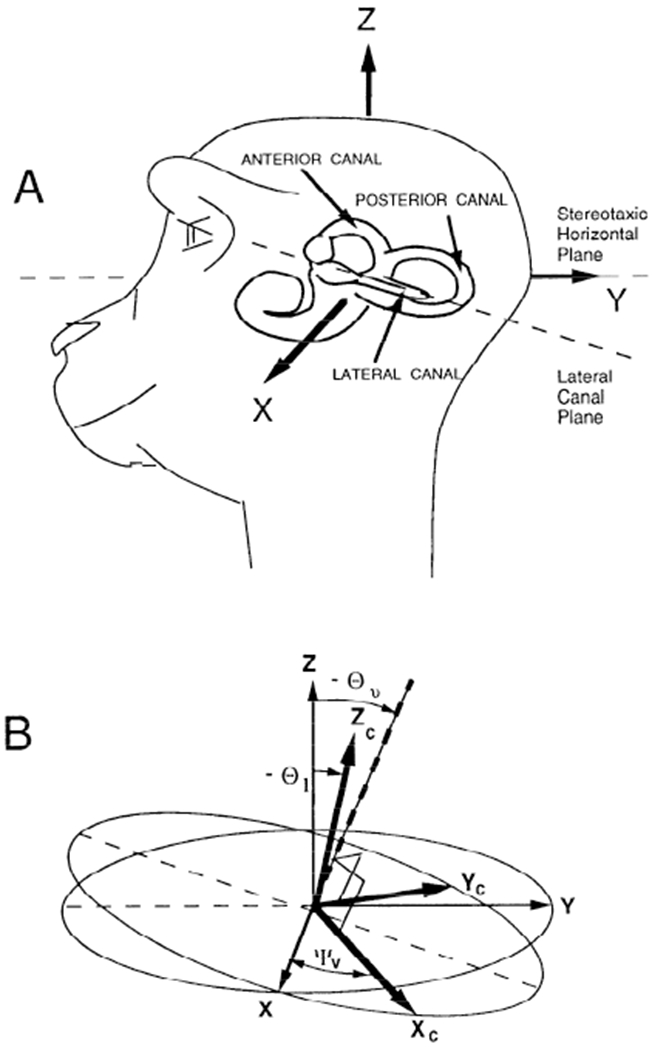FIG. 9.

A: position of the left labyrinth of a monkey relative to its head. The coordinate frame of the head has been taken as the stereotaxic frame. It is the coordinate frame in which pitch (vertical), roll (torsion), and yaw (horizontal) eye movements are measured. X: pitch axis. Y: roll axis. Z: yaw axis. B: representation of the relative orientation of the coordinate axes of the stereotaxic frame (X, Y, Z) and the coordinate axes determined by the normals to the semicircular canal planes. The positive direction of these normals is determined by using a right-hand rule for the rotation direction that excites an individual canal. Xc: positive direction for the anterior canal. Yc: positive direction for the posterior canal. Zc: positive direction for the lateral canal. Θ1 is the angle between the stereotaxic vertical axis (Z) and the average direction of the lateral canal axis (Zc). Θυ is the angle between Z and the normal to the plane determined by Xc and Yc. The Xc and Yc axes are orthogonal to each other and rotated relative to the head frame about an axis normal their plane (dashed axis) by an angle ψv. The difference between Θυ and Θ1, represents the nonorthogonality of the canal system coordinate frame.
